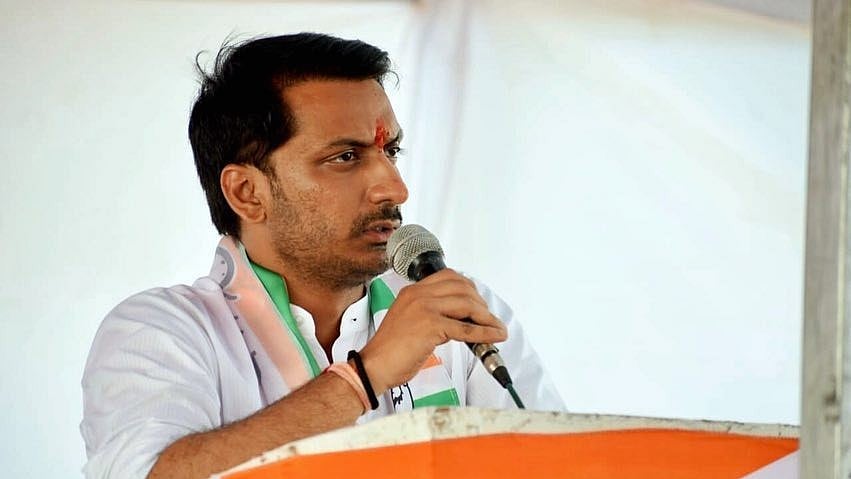Swami Swatmananda is a disciple of Swami Chinmayananda and a dynamic leader of the Chinmaya Mission in Mumbai since 2000. In a candid interview with The Free Press Journal, Swami Swatmananda shares his experience of attending the consecration ceremony of the Ram Mandir in Ayodhya, the profound essence of Lord Ram and offers deeper significance of the Ramayana.
Excerpts from the interview:
Many say that the Ramayana and Lord Ram are a myth. What is your take on that?
This ‘Ramayana kalpanik hain’ narrative has been pedalled by a few people who wrote our history and who had a certain agenda to sow in our minds. If you go by the Indian scriptures, the classification is Veda, Itihasa, and Purana. The Ramayana and the Mahabharata are classified as Itihasa, which means history. In Sanskrit, it is ‘it thus happened’. Thus, the Ramayana is a part of our history. There is a poetic element in it and certain imaginations of people come into play, there’s no doubt about that. Why are only these two called as Itihasa? Valmiki’s Ramayana is an authority because he is a contemporary of Lord Ram. He saw many things happening and noted them down. That’s why we call it Itihasa. Same with Ved Vyasa for the Mahabharata. We should also go by the proof. There are 51 generations before Lord Ram, who have been mentioned and 36 after. There’s historical proof of the existence of many of these kings.
And, there are archaeological evidences as well...
Yes, there’s Ram Setu. The entire Ram Van Gaman Path matches the description in Valmiki’s Ramayana. You can also find planetary evidences. Planetary constellations are mentioned for Lord Ram’s birth, when he went to vanvas, and returned to Ayodhya. Today, you can use a software to verify the planetary and astrological details of that time. Many people have done research on this. Therefore, it has been established that the Ramayana is not kalpanik (imaginary).
For the sake of argument that someone believes strongly that it is Kalpanik or just a myth, you cannot discount the faith of millions of people. There’s something to it? That’s the way I look at it.
Yes. And so many people are living that way of life. Many saints and sages have even discovered Bhagwan Ram’s state of consciousness and had darshan of Ram. Not only in Bharat but across the world we can see evidence. Egyptian kings are called Ramseys. In Thailand even now the king is called as Ram. Even if someone says Ramayan or Ram is a myth. The values that it propagates makes our lives better. That’s the proof of it.
How is Ramayan relevant to our day to day life today?
The meaning of Ramayana is the path of Ram. Bhagwan Ram walked the path of dharma. He was anchored in his duties. He played the role of a son, brother, husband, friend even of an enemy, in a very ideal way. So we will get a lot of role clarity from him. When Bharat asked him to come back and rule Ayodhya after he was exiled to the forest, Bhagwan Ram said ‘no, as a son I have to fulfil my father’s promise (to Keikey) without compromise’. So we get role clarity and goal clarity. Today, many people don’t have clarity on what is their goal in life. If we read Ramayana goals become very clear. Look at Hanumanji’s life, Sugreev’s life, Vibhishan’s life. Look at Ravan’s life — the goals he had and where he landed.

What is the greatest lesson we can learn from Lord Ram?
We get moral clarity about what is right and wrong. Rising above my emotions, I should be able to see what is right and wrong and take a decision. In Valmiki’s Ramayana, Ram is a human being. He goes through fear, pain, suspicion, jealousy and anger but he doesn’t compromise on dharma. That is what Ramayana is, that we as human beings will go through all emotions but how to stay anchored in what is right. So it is very relevant. Even from society’s stand point Ram teaches us to put nation above oneself and to be inclusive.
How does Valmiki describe Ayodhya in the Ramayan?
There is a beautiful description in Bal Kand which is the first Kand. In the fifth canto, he describes Ayodhya. There he says there’s a great principality called Kosala extending on the banks of the river Sarayu. It is both happy and prosperous. There are abundant riches and plenty of food grains.
And in that Kosal Pradesh, there is this world renown city Ayodhya. Loka Vishwamatha is the word for world renown. A city that was built by Vaivavata Manu, the ruler of mankind. The size is also given. Valmiki says, It has well-aligned roads. The city is of 12 yojanas. One yojana is 10 miles. So it’s 120 miles long and 3 yojanas wide.
It has extensive highways daily sprinkled with water, strewn with flowers and King Dashrath who promoted his kingdom to a pre-eminent degree by his virtuous rule has made the city as glorious as Indra’s Amravati. The description of the architecture there is very beautiful. He says there are arched gateways with beautiful doors. There are markets with catapults and weapons. It’s peopled by different classes of craftsmen. There is a mote around Ayodhya which cannot be easily crossed making it difficult to access for enemies. And there are seven story buildings. It is laid out in the design of a dice.
Lord Ram is Maryada Purshotam. Then why did he make Ma Sita undergo an Agni Pariksha after rescuing her from Ravan? Many people, specially women’s groups, have critisised his actions?
True, people will have questions about this, so we have to understand the standpoints. One of the most beautiful aspects of Bhagwan’s life is that he operates from dharma and he plays the role that he has to play without any compromise. As a husband, he pines for his wife and did everything to rescue her. So he did play the role of a husband very well. And now he has to return as a king because 14 years of exile are over. Firstly, he did not ever tell Sita to prove her chastity. That’s a myth. Secondly he did not tell Sita to enter the fire and do Agni Pariksha. So in my understanding the word Agni Pariksha is a misnomer. It is Agni Pravesh that Sitaji herself does. Third, now that he has rescued sita they will both return as king and queen. When Sita comes before Ram in Lanka, after Ravan is killed, Ram tells her, “I’ve protected your honour and saved the honour of my clan and the indignity has been wiped out”. But Shri Ram is very clear that there will be a scandal in the minds of people. As a husband, he is very clear that he has no doubts about her purity and chastity. However Sitaji’s reputation has to be protected. So he tells her that she may go wherever she likes because as a king he cannot take her back because of the fear of public scandal. He even tells her to set her mind on Laxman or Bharat or Vibhishan etc. Sitaji then pleads and says, “I swear to you by my own character be confident about me”. Finally, she tells Laxman to lite a fire for her as that’s the only antidote to this calamity. She says entering a fire is the only recourse appropriate for her. We have to understand that this is not a suicide mission. Agni is a means of vindicating one’s stand as true. So this is called as Agni Pravesh. When she enters into the fire, then Ram is in tears. He doesn’t like this. Finally Agni Devta appears and says, ‘Here is your spouse Sita. No sin exists in her. The blessed lady whose conduct has been excellent has never been unfaithful to you. Therefore accept the sinless princess of Mithila’.
So Ram Bhagwan was only following Dharma and thinking of Sita’s wellbeing?
Yes. Ram says that Sita needed this purificatory ordeal in the eyes of the people. He had no doubts about her. He concludes by saying that ‘Sita is non different from me even as sunlight is non different from the Sun’. We look at Sita and Ram as two separate entities but they are one.










